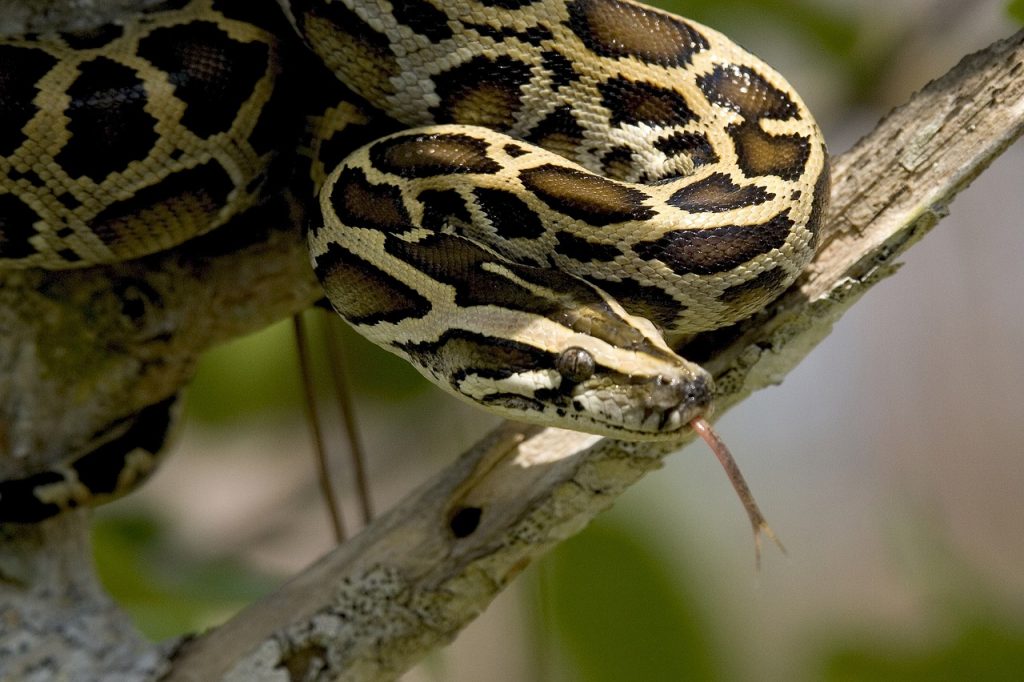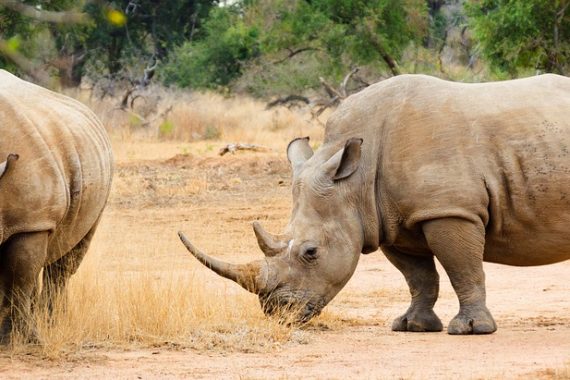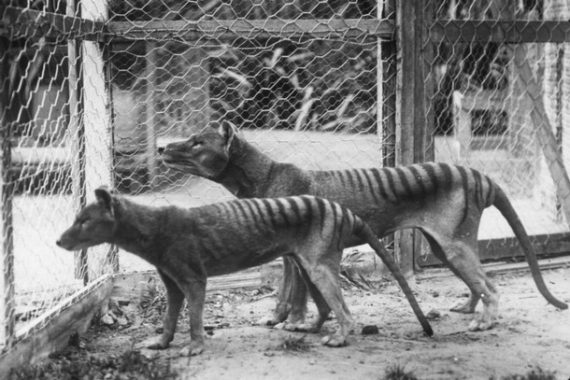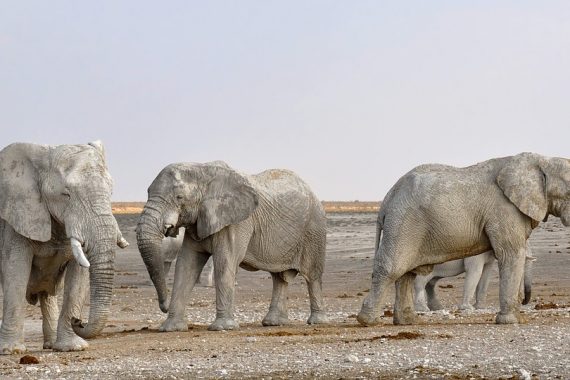 Burmese pythons are physically one of the largest snakes in the world. Native to Southeast Asia these animals are under threat of extinction. Conversely, introduction to the United States, specifically in Florida, these snakes have established a foothold and are negatively affecting native wildlife. Come listen and learn about this fascinating species.
Burmese pythons are physically one of the largest snakes in the world. Native to Southeast Asia these animals are under threat of extinction. Conversely, introduction to the United States, specifically in Florida, these snakes have established a foothold and are negatively affecting native wildlife. Come listen and learn about this fascinating species.
Burmese Python Evolution
The Burmese Python belongs to the family Pythonidae. The ’python’ differs from the ‘boa’ family. More specifically, pythons are native to Africa and Asia. Whereas, boa constrictors are native to the Americas. There are 11 different species of python to include:
- Angolan python (Africa)
- Bornean python (Asia)
- Blood python (Asia)
- Sumatran short-tailed python (Asia)
- Myanmar short-tailed python (Asia)
- Indian python (Asia)
- Ball python (Africa)
- Rock python (Africa)
- Timor python (Asia)
Fossil evidence places the first snakes evolving over 170 million years ago during the Jurassic period. They are believed to have evolved from burrowing lizards that had short stubby legs. Eventfully the legs receded and remnants of these legs are found in male snakes, specifically their bone spurs.
While not directly related to the Burmese python. Titanoboa, largest snake ever, was discovered by the University of Florida. This snake reached lengths of 40 feet (13 meters) and lived over 60 million years ago. 
Burmese Python Facts
- Live up to 25 years in the wild (40 years in captivity)
- Native range is Southeast Asia and portions of Indonesia
- Stable populations established in Southern Florida
- Have two lungs and considered ancient snakes compared to other snakes who only have one lung
- Pythons constrict their prey and have elastic skulls allowing them to enlarge their mouths to swallow their meal
- Move by rectilinear motion, do not slither but rather move in a straight line.
Burmese Python Physiology
These snakes can grow up to be 23 feet (7 meters) and can weigh up to 200 lbs. (90 kg). Their coat color patterns are splotches of brown with dark rings against a lighter brown or tan body. This pattern is ideal camouflage to ambush prey. Generally, these snakes can only travel less than 1 mph.
- Snakes metabolism greatly increases after eating, allowing digestion, increase of up to 40% over normal
- Can survive weeks or months without a meal
- Forked tongues are used as chemoreceptors to track prey, each fork indicating direction
- Snakes are cold blooded meaning they cannot thermoregulate and depend on the sun or other sources of heat to warm their bodies, resting body temps around 85 F (29 C)

Conservation Efforts
Current populations in Asia are in sharp decline and the Burmese python is threated with extinction. In Vietnam, Burmese python populations have declined by 80% due to poaching and these snakes prized for their skin and meat. However, populations in Florida have exploded with estimates of over 100,000 snakes now residing in Florida (rough estimates and exact populations cannot be determined currently).
Organizations to Support
Conservancy of Southwest Florida







